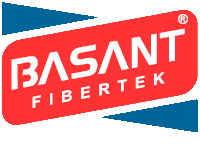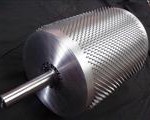Most Spinning Mills in India, big or small, are suffering post COVID pandemic to the current sharp decline in demand for yarn coupled with labour shortage. Many are running the Mill at lower capacity and trying to dispose off accumulated stocks. Further, there are signs that the global market may not revive for a year or two due to the effects of lockdown and massive job losses.
Under such a grim situation, one option for the Mills is that they can try and survive until the market improves. This option is fraught with danger since no one controls the market and none can predict whether the market will improve or worsen and when. So the real option for Mills is only to improve what is controllable, i.e. reduce costs and improve quality and marketing efforts. The bright side is that some Mills are already doing it successfully and are able to run their Mills profitably in the present circumstances without carrying much yarn stocks. This proves that even in this grim situation, there is a way for the Mills to not only survive but actually thrive!
BASANT has had the privilege of visiting hundreds on Mills worldwide and observing their operations closely. In the process, we learnt of many best practices and also many not-so-healthy practices. We truly believe that Spinning Mills can grow profitably under any market conditions and the fact that some Mills are doing exactly that in the current scenario is proof of this belief.
We have consolidated our learning and would like to share some of the insights that we believe will be very useful for Mills at this critical juncture when market challenges seem more insurmountable than they actually are.
While specific remedial measures will vary from Mill to Mill, there are certain general principles any Mill can follow. We have framed a 5-Point Program that all Mills can benefit from. As a service to the industry, we even offer a free evaluation to Mills to help them assess the potential for in-house improvements to achieve the desired competitiveness and can also go a step further and present proposal for a customized improvement plan to those interested.
So, without much ado, let us go through the specific action areas that a Mill can act on to reduce losses and improve quality, thus building resilience to tide over down-cycles, which are an integral part of the textile market:
1. Focus on Blowroom and Carding: Every spinner knows that Carding is the heart of spinning. In turn, Carding efficiency depends on the quality of opening, cleaning and blending of the material fed into the Card. Yet, in many Mills, we have noticed that sufficient attention is not given to these initial processes leading to a lot of problems and waste in the downstream process. In many reputed Mills, which follow a very detailed maintenance schedule, we have seen pinned rollers in Blowroom and Cards in very poor state that lead to inadequate processing and serious quality issues, besides increasing process waste.Mills should adopt the principle of gentle opening* to avoid rupture, improve cleaning and openingto achieve better card sliver and improved yarn realization (YR) by 2% or more. This, more than anything else, is usually the difference between running a Mill at a profit or loss. In most Mills, the attention given to this area is less than required.
*gentle opening means opening & cleaning fibres without rupture and can be achieved through choice of right clothing ( wire or pins) and the right machine settings. BASANT provides audit services and customized solutions to Mills to achieve this.
2. Maintain quality consistency – in poor market conditions, Mills usually build up stocks and reduce expenditure on accessories, thus reducing both yarn realization (a.k.a. fibre yield or fibre recovery) and quality, which further increases the cost and reduces the saleability of yarn. Thus, a vicious cycle of deterioration begins. Mills should avoid this trap. Maintaining quality gives buyers confidence and helps the mill be the preferred supplier for major buyers, thereby even avoiding the need to retain stocks.
Usually, achieving consistent quality also means a reduction in costs. Savings on power, manpower and stores by adopting best practices in maintenance and process optimization can add up to another 8% on cost in most spinning mills.
3. Rationalize the product mix and market segment: Each mill (or at least each unit in a mill) should restrict their product to 3 different counts or less of just one grade of yarn. The production capacity of any Mill is a minuscule percentage of the total market size, hence conceptually, it should not be difficult to sell yarn in the market for any Mill which can provide a better quality and lower prices. Limiting the product range eliminates the need to change machine settings or machine accessories thus saving enourmous time, production capacity and process waste.
Many Mills opt for a wide product range with the belief that it ensures full production since fall in demand for one grade is likely to be made up by another. The problem is that a wide product mix leads to short production runs and multiple setting changes leading to loss of capacity and efficiency. It also reduces the quality level since there is low scope of optimizing production for a particular grade.
Every Mill should analyze how many clients it has lost in the recent past due to i) quality or other complaints, ii) inability to meet their price expectations. In most cases, the mill can run full production even in a bad market if these customers start buying again!
4. Purposeful, visual MIS: MIS should be relevant and easy to understand, not an expansive spreadsheet. What this means that reports should be graphical instead of the commonly used spreadsheets. The visual graphics should compareminimum and maximum values of each control parameter instead of just averages and also monitor the trend over time. Regular audits of the process should be done to identify the root cause of variations in quality or higher process cost. Additionally, there should be a target for continuous improvement.
5. Have a lean, effective team: Last, but not the least, many Mills have the scope to reduce manpower (both staff and workmen) through training, defining clear job descriptions for each post with clear accountability through defined targets (KPIs) and regular reviews. It is always better to appoint competent people and pay them well instead of employing more of average candidates. Many Mills abroad, even in Asian countries, run with a low staff-to-worker ratio and just 2 or 3 levels of staff between the CEO and the workman. What’s more significant is that through a slimmer, more competent team Mills improve performance, become more innovative, progressive and purpose driven with no buck to pass.
In short, adding more value to the customers and reducing waste and variations in the production with a small but competent team can make a spinning Mill recession proof. Improvements in quality and YR invariably result in power and labour savings, besides air and humidity costs too. Besides becoming more financially resilient and competitive, Mills can also transform their culture for the better by going on the above 5-point improvement path.

